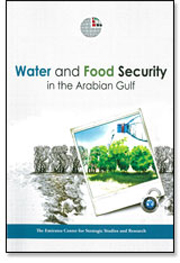Book contents
- Frontmatter
- Contents
- Figures and Tables
- Abbreviations and Acronyms
- Foreword
- Introduction
- Regional Water and Food Security
- Keynote Addresses
- Water Security in a Changing World
- Water Security in the Arabian Gulf Region
- Water Resource Management in the Arabian Gulf Region
- Regional and International Food Security
- Water and Food Security in the UAE
- Contributors
- Notes
- Bibliography
- Index
Regional Water and Food Security
from Introduction
Published online by Cambridge University Press: 05 September 2014
- Frontmatter
- Contents
- Figures and Tables
- Abbreviations and Acronyms
- Foreword
- Introduction
- Regional Water and Food Security
- Keynote Addresses
- Water Security in a Changing World
- Water Security in the Arabian Gulf Region
- Water Resource Management in the Arabian Gulf Region
- Regional and International Food Security
- Water and Food Security in the UAE
- Contributors
- Notes
- Bibliography
- Index
Summary
Water is increasingly being viewed as one of the most important renewable resources worldwide. Increasing populations and growing economies, coupled with a changing global climate, have led to an increase in water demand around the globe. However, there are large variations in the amounts of water available to nations and regions, and growing concern surrounding the uncertainty associated with these supplies, due in large part to natural and human impacts on the water cycle.
According to recent studies cited by Nadim Farajalla in this volume, global demand for water will be 40 percent higher by 2030—a trend that is mirrored in the six countries of the GCC. The combined population of the Gulf states increased from about 30 million to nearly 44 million between 2002 and 2010; however, their demand for water over roughly the same period has increased at a rate of about 17 percent—nearly 2.5 times their population and GDP growth rates. The current trend in the GCC countries of increasing demand with a constant supply of freshwater is simply not sustainable, and unless a major shift in controlling demand occurs, water scarcity will become a major obstacle to development in the region.
The need for alternative sources of fresh water has also been aggravated by the large influx of guest workers and significant improvements in the quality of life among Gulf populations.
- Type
- Chapter
- Information
- Water and Food Security in the Arabian Gulf , pp. 3 - 8Publisher: Emirates Center for Strategic Studies and ResearchPrint publication year: 2013

